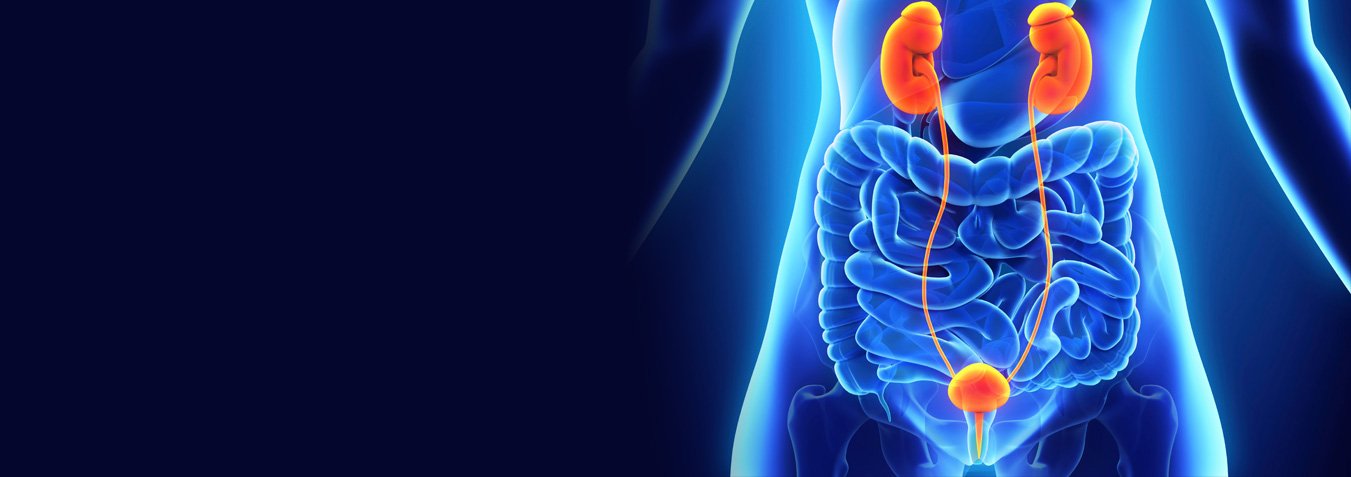
URO ONCOLOGY
Transurethral resection of the prostate (TURP) is the surgical removal of part of the prostate gland. It is one option available
to relieve the symptoms of an enlarged prostate or other benign (non-cancerous) prostate disease. It is by far the most common of the surgical
procedures used for a benign prostate disease.
Prostate gland
The prostate is a small gland that is part of the male reproductive system. It helps with making semen. The urethra is the
tube that goes from the bladder, through the prostate gland, to the outside of the body. It is used to pass urine and seminal fluid.
Prostate problems
The three main problems that occur in the prostate include:
- inflammation (prostatitis)
- non-cancerous enlargement of the middle part of the prostate. This is also called benign prostatic hyperplasia (BPH)
- cancer of the prostate. This occurs mostly at the back of the prostate, but sometimes also occurs in the area where the prostate is enlarged due
to BPH.
Size and Blockage of the urethra
If the inner part of the prostate gland obstructs the urethra during urination, this will irritate the bladder and cause urinary
symptoms.
Urinary symptoms may include:
- problems with starting urination
- reduced flow
- frequent urination, particularly at night
- urgency and possible urgency incontinence
- passing drops of urine involuntarily after you think you’ve finished
- blood in the urine – although this can never be assumed to be due to the prostate until other causes have been excluded.
The actual size of the prostate does not appear to determine whether or not there is a blockage. Some men with large prostates never develop obstruction, but some men with small prostates can have severe bladder obstruction, which causes difficulty with urinating.
Around one in three Victorian men over the age of 50 years have some urinary symptoms. In most cases, these symptoms are due to a blockage caused by an enlarged prostate, but they may be due to other causes.
TURP procedure
TURP is sometimes referred to as a ‘re-bore’. It involves inserting a slender instrument through the urethra into the bladder. Only the middle part of the prostate is removed to allow you to pass urine more easily.TURP is used most often for non-cancerous blockage, but may also be used in some cases of prostate cancer. This is the most common form of surgery (around 95 per cent of surgical procedures). The average hospital stay is three to four days.
Side effects of TURP
While surgery can improve symptoms dramatically, TURP can have significant unwanted side effects. You should discuss the pros and cons of both medical management and surgery with your doctor before you make a decision.
Common side effects of TURP
Common side effects after surgery include:
- Bleeding after the operation – this usually reduces over time and should stop after four weeks.
- Retrograde ejaculation – most men are able to have erections and orgasms after surgery to treat an enlarged prostate. However, they may not ejaculate because the bladder neck is removed along with prostatic tissue. This causes the ejaculate to collect with urine and pass out in the next urination.
Less common side effects of TURP
Less common unwanted effects of surgery include:
- Urinary symptoms do not change – sometimes surgery does not cure your urinary problems. Even though the blockage has been cleared, the bladder irritability may continue and you may still have symptoms such as being unable to empty your bladder completely and nocturia (passing urine more than twice during the night).
- Erectile dysfunction (impotence) – some men are unable to get or maintain an erection sufficient for sexual intercourse after surgery. This is more of a problem for men who had erectile difficulties before their operation. This problem may be treated by medication.
- Urethral strictures – when scarring occurs in and around the urinary tract, it can cause further blockage to urine flow. Strictures may need to be dilated or need further surgery.
- Urinary incontinence – sometimes surgery results in being unable to hold or control the flow of urine. This may be due to continuing bladder problems or, less often, to sphincter muscle damage.
- Infertility – retrograde ejaculation is not harmful, but it can result in infertility. It causes the seminal fluid to collect with the urine and it doesn’t come out as ejaculate. This makes ‘natural’ insemination impossible. However, in vitro fertilisation (IVF) may be used to achieve a pregnancy. The sperm can be removed from the urine and injected into the woman’s harvested eggs.